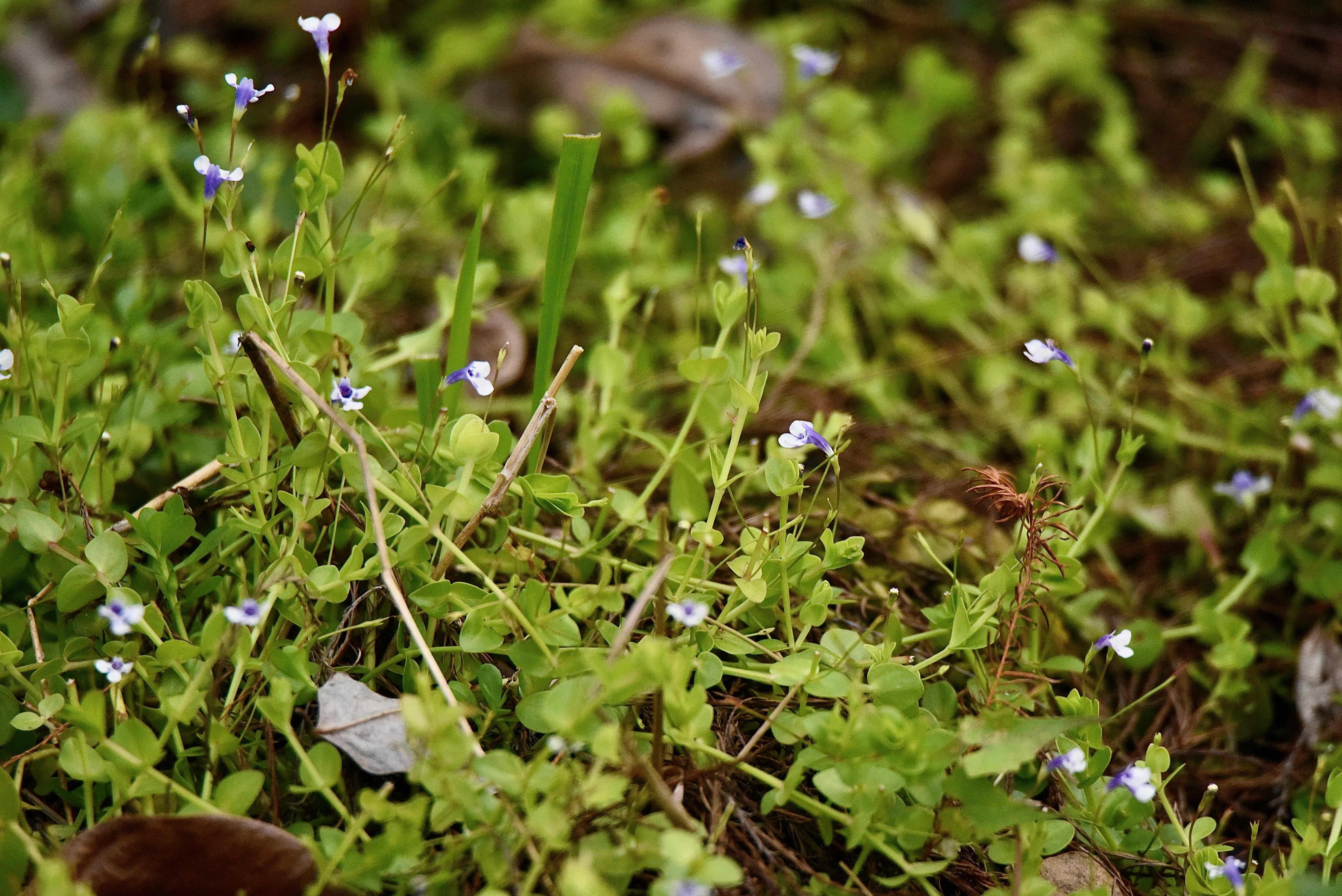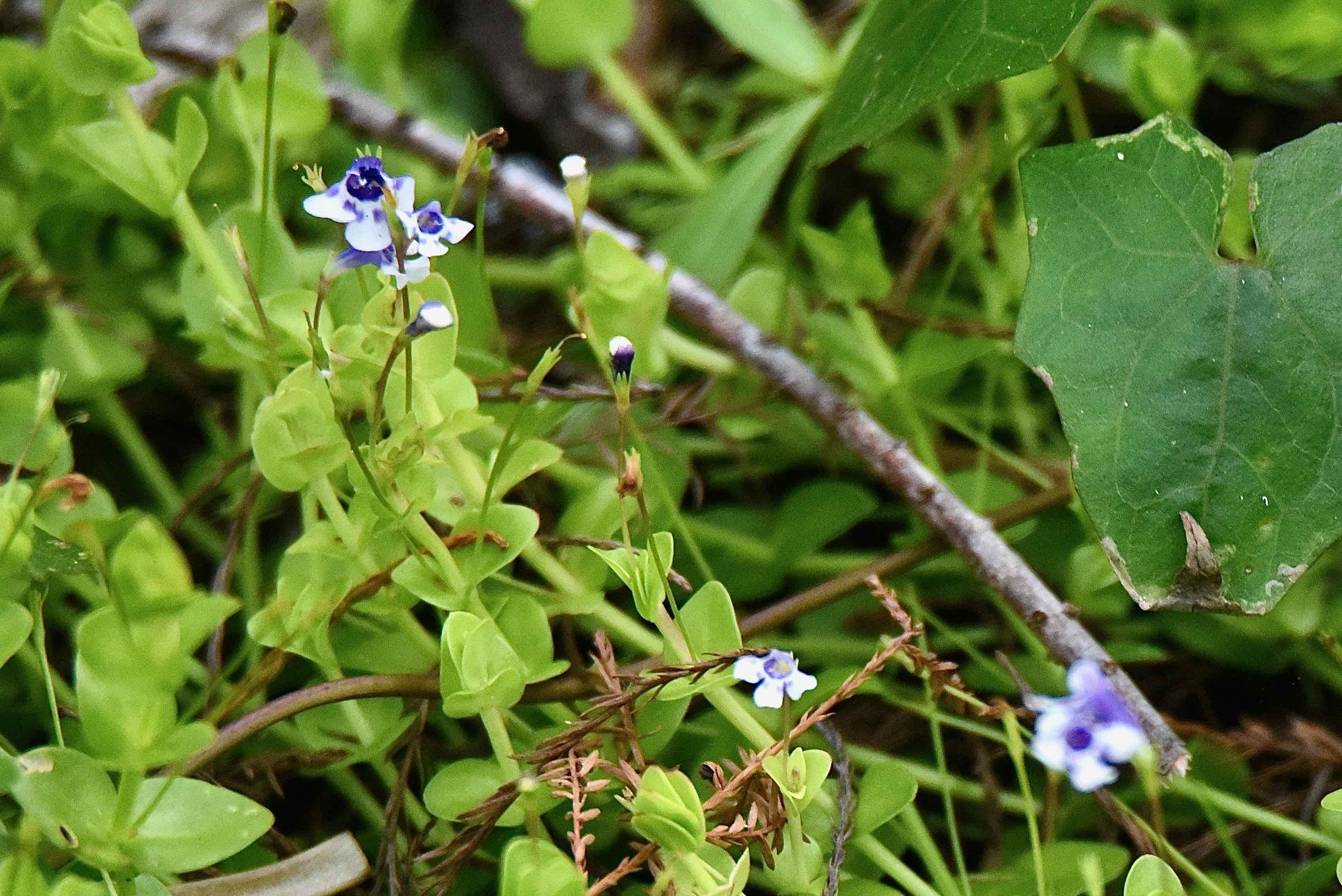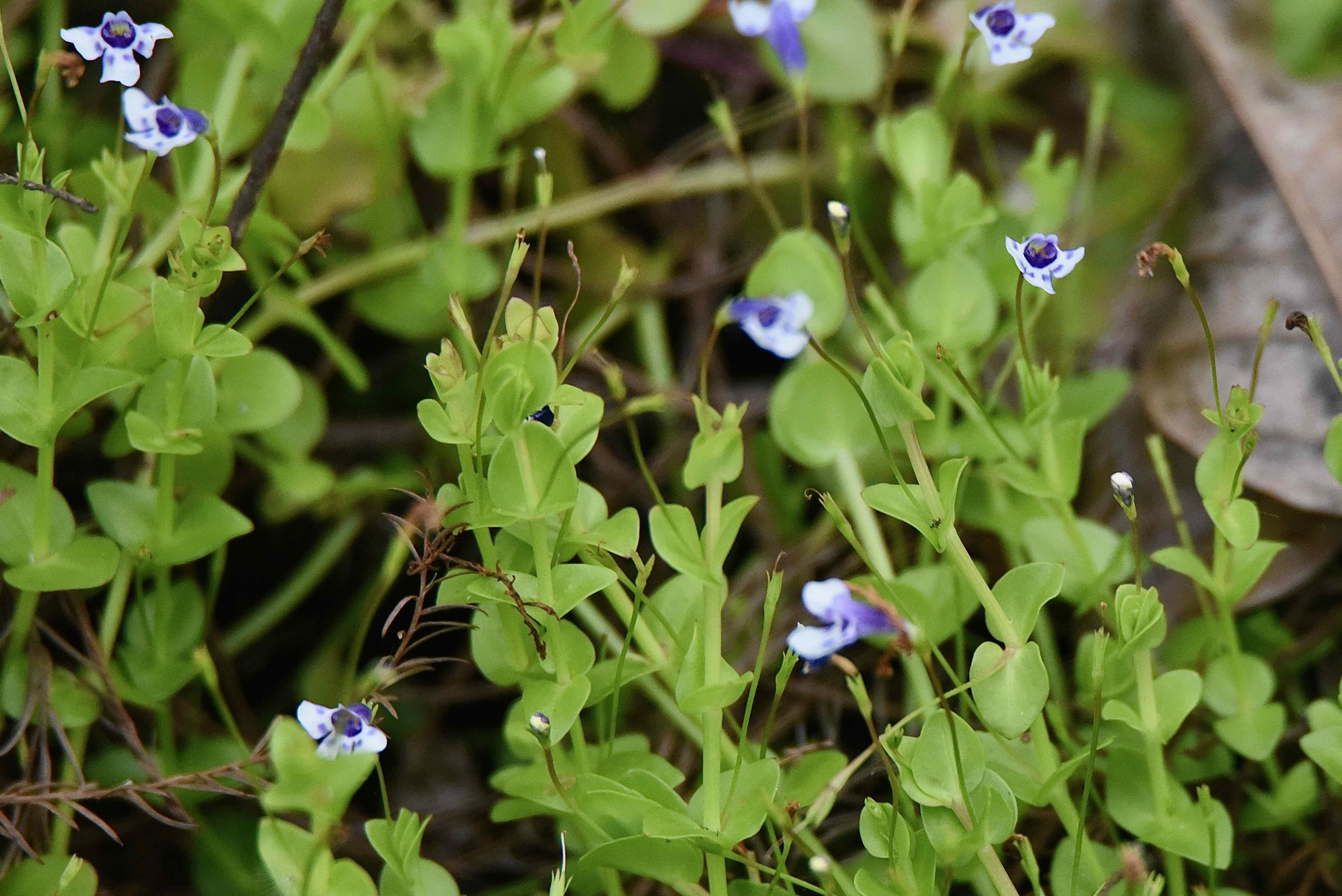
Savannah False Pimpernel, photographed at Corkscrew Swamp Sanctuary, Naples, Collier County, in February 2020.
To our eye, the flower of Savannah false pimpernel has a heavenly look to it — like an angel. But when we look again, we see a fish.
In either case, it’s a pretty little flower, one that’s all too rare in the wilds of South Florida. The Institute for Regional Conservation considers it imperiled within the southern end of the Peninsula. However, it’s more abundant elsewhere, particularly along the Gulf Coast and central part of Florida. No agency lists it as threatened or endangered.
Savannah false pimpernel, scientifically known as Lindernia grandiflora, is found throughout most of the Peninsula as far south as Broward and Collier counties and a few counties in the eastern end of the Panhandle. It’s also found in Georgia. Note: the IRC says Savannah false pimpernel might be extirpated, or locally extinct, within Broward; the United States Department of Agriculture’s PLANTS database does not include Broward in its range map for the plant.
Savannah false pimpernel is a ground-hugging plant rarely reaching six inches off the ground. It will root where nodes along the stem touch soil, forming a mat of sorts. It is a Florida native and an annual.
The leaves are thick and leathery to the touch. They are oval to elliptical in shape, arranged opposite each other along the stem. There is no leaf stem.
Despite the scientific name, grandiflora — large flower — the blooms of Savannah false pimpernel are on the small side, just larger than most of its 80 or so cousins withing the genus Lindernia. (We should mention that Lindernia honors the 18th century botanist Franz Balthasar von Lindern.) The flowers are tubular, each with five petals, two on top and three on the sides and bottom. The deep purple part is the corolla. The petals are a mottled mix of blues and whites; the two top petals are barely noticeable, while the three others are much larger and form the wings and body of our “angel.” Or the top and bottom fins and tail of our “fish.” Feel free to come up with your own imagery.
Early 19th century naturalist Thomas Nuttall first described the plant while exploring the wilds of Georgia. He said he found it growing in sandy springs and ponds “betwixt Savannah and Augusta.”
As noted above, Savannah false pimpernel is an annual but can be found in bloom most of the year. The plant dies in early winter, reseeds itself and reappears in late winter, early spring. (The photos on this page were taken in early February.)
It prefers wet, sandy soils, though wet seems more important than sandy. It’s found growing in wet pinelands, marshes and swamps, grasslands, wet ditches and along stream banks. It can tolerate some drought, but not much. Because it reseeds, Savannah false pimpernel needs fairly open ground. It takes fulls sun to light shade, but produces more flowers in sunnier locations.
The flowers of Savannah false pimpernel attract small pollinators, but the plant mainly reproduces through self-pollination.
It is cultivated, used as a ground cover in wet settings, as an ornamental in water gardens and in pots and hanging baskets. It does well in containers as long as the soil stays on the moist side.
We noted above that Savannah false pimpernel is an annual plant that dies in early winter, sprouting new plants later in the season. However, Osario Rufino, writing in The Palmetto, the newsletter of the Florida Native Plant Society, says Savannah false pimpernel can be maintained in containers indefinitely with some aggressive trimming and a little fertilizer.
Oddly, the plant seems to be grown by few if any Florida native nurseries, but is offered by plenty of online retailers. It’s sold under a variety of names: angel’s tears, moneywort and seemingly scientific Ilysanthes floribunda, which is not recognized within the scientific community.
Savannah false pimpernel is a member of Linderniaceae. For followers of taxonomy, the classification in Linderniaceae is relatively new. Until about 1992, members of Lindernia were considered members of Scrophulariaceae, snapdragon family.



